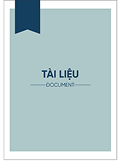Tài liệu
Spillover effects of the US monetar y policy normalization on African stock markets

Xem mô tả
155
Xem & Tải
1
Tóm tắt
Purpose – We study the contemporaneous effects of US monetary policy normalization on African stock market using panel data from six African countries. Design/methodology/approach – Dai ly data from May 1, 201 3 t o Dec em ber 31 , 20 18 were used in order to accommo date the announcement effects since the US moneatry policy normalization announcement was made in May 2013, while the rate hike was in December 2015. The study used the FE, RE and PMG models. Findings – The results revealed that US 10-year bond yield and Treasury bill rate shocks negatively affect stock prices in Africa. S$P500 shock positively affects African stock prices.The result revealed that the integration of African financial market to the global financial market is a major source of vulnerability. The finding that US Treasury bill rate is a major depressant of the African stock prices reveals the short-termism of foreign polio inflows into African economies. Originality/value – We provide inexorably insight into the interplay of financial systems globally. It can be useful for the purposes of generalization in developing economies in the shape of African countries. More so, this study could be replicated in another economic bloc or region with the aim of further exposing the farreaching spillover effects of the US monetary policy normalization.
Mô tả
Financial banking
Tác giả
Ebere Kalu
Chinwe Okoyeuzu
Angela Ukemenam
Người hướng dẫn
Nơi xuất bản
Nhà xuất bản
Kinh Tế Quốc Dân
Năm xuất bản
2019
ISBN
1960-0020
ISSN
Từ khóa chủ đề
US monetary policy , Spillover effects , Normalization , Africa Paper type Research
Trích dẫn
Bộ sưu tập
Tệp tin

10-1108_JED-09-2019-0038.pdf
D:\NEU_DSpace\tapchitienganh
Dung lượng: 242.33 KBĐịnh dạng: pdf
Lượt xem: 1 Lượt tải: 0
